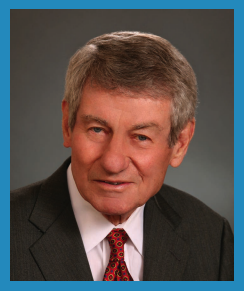IN PRINT: The Firm Contributes Article to New Jersey Law Journal Special Issue On “Auto Injury”
Certification of Permanency: Important Policy With Unfair Unintended Consequences
Click here to download the article in pdf format.
When plaintiffs in New Jersey are injured in an automobile accident, they are most often subject to either the verbal threshold (limitation on lawsuit) or the zero threshold (no limitation on lawsuit) depending on their insurance policy. The verbal threshold election was instituted to reduce insurance premiums by limiting the noneconomic damages insured motorists can sue for if they are involved in an automobile accident. DiProspero v. Penn, 183 N.J. 477, 480 (2005). When plaintiffs are bound by the verbal threshold and seek recovery for noneconomic damages, their personal injury must be one of the six types of statutorily enumerated injuries:
- (1) death;
- (2) dismemberment;
- (3) significant disfigurement or significant scarring;
- (4) displaced fractures;
- (5) loss of fetus; or
- (6) a permanent injury within a reasonable degree of medical probability, other than scarring or disfigurement. N.J.S.A. 39:6A8.
In order for a plaintiff to establish that he or she sustained one of these injuries, the plaintiff shall, “within 60 days following the date of the answer to the complaint by the defendant, provide the defendant with a certification from the licensed treating physician or a board-certified licensed physician to whom the plaintiff was referred by the treating physician.” N.J.S.A. 39:6A8 (emphasis added). Therefore, when a plaintiff is subject to the verbal threshold, he or she will be barred from recovering for pain and suffering damages unless a treating physician as described by the statute provides a certification of permanency under penalty of perjury.
The purposes of the certification of permanency requirement are “to provide evidence that a plaintiff’s claim is meritorious in that he or she has, in fact, sustained an injury that qualifies for the recovery of noneconomic damages under the revised AICRA verbal threshold standard and to thwart fraud by furnishing a legal foundation with a potential charge of perjury.” Casinelli v. Manglapus, 181 N.J. 354, 366 (2004). While these are important purposes, mandating that the certification be provided by the treating physician ignores the reality that there are cases where plaintiffs suffer non-traditional injuries that qualify for noneconomic damages, yet the treating physicians are unwilling to sign a certification even though they agree that one of the verbal threshold categories are satisfied. When a plaintiff sustains orthopedic or neurologic injuries, there is almost always no issue as these types of medical providers deal with auto injury patients on a regular basis and have a familiarity with the legal system as it pertains to auto cases.
In those cases, the doctors will either opine that the client sustained an injury that meets one of the threshold categories and execute a certification of permanency, or they will opine that the threshold categories have not been met and will not execute the certification. In some cases, however, medical providers—who are unfamiliar with the legal system and auto insurance law and/or if they want no involvement with lawyers and legal documents— refuse to “get involved in the legal process.” This, in turn, causes tension in the relationship between the patient and the doctor and may preclude the patient from recovering noneconomic damages despite sustaining a permanent injury.
By way of example, a plaintiff suffered a severe back injury but sought extensive and lengthy conservative treatment from his primary care longtime family doctor. The primary care doctor did not dispute that the patient sustained a permanent injury but refused to “get involved with lawsuits” and would not execute the certification for the plaintiff. In another case, a client who sustained a sternum injury but only received treatment from her primary care doctor was advised that the doctor would not sign a certification of permanency because she did not want to get involved with the legal system. The doctor did not dispute that the client sustained a permanent injury but she was just unwilling to sign a document to be used for court. When clients sustain non-traditional injuries and treat with doctors who are unfamiliar with the automobile legal system these issues frequently come up. Some examples include a client seeking treatment from an ENT after sustaining hearing loss in an automobile accident or a client receiving treatment from an oculoplastic specialist for a tear of his eyelid with resulting permanent limitations. Lawyers who represent plaintiffs in automobile accident cases on a regular basis encounter these issues from time to time.
A further problem occurs when permanently injured plaintiffs receive treatment in another state from doctors who are complete strangers to New Jersey law. Those doctors are sometimes resistant to signing outofstate legal documents because they sometimes do not understand what the extent of their involvement will be with the New Jersey lawsuit and fear that they will have future obligations to the case. These clients should all be entitled to damages for the pain and suffering they have and will continue to suffer from their permanent injuries, but are nonetheless unjustly barred from recovery.
There are several ways to improve the likelihood of a doctor feeling more comfortable with a certification of permanency when the doctor is unfamiliar with the system and does not want to get involved. First, prepare an informational package for the doctor with specific cases relating to the statute and explain that by signing the certification, it does not mean the doctor will be named as an expert witness who will be required to testify before a jury. A common misconception is that by signing the certification of permanency, the doctor will become deeply involved in the lawsuit and some doctors just want nothing to do with lawyers or court. Explaining the law to the doctor can assuage these concerns.
Second, instead of mailing a form certification to the doctor to review and fill out and potentially sign, suggest to the plaintiff that he or she physically go to the doctor’s office and present the certification to the doctor in person. Doctors who would otherwise be unwilling to be involved in the legal system will be more willing to sign the certification if a patient asks them directly and in person, rather than if they receive a letter request from a lawyer, who they do not know. In one case, the author was advised by a certain doctor’s office that he was unwilling to sign the certification of permanency because he did not want to get involved in the case. The client was given the form certification to take to the next appointment and upon request from the patient, the doctor filled out the certification and signed it before starting the examination.
Third, it is important to remember that there is no requirement that a certification be provided by the doctor who provided the plaintiff with the most care. The statute only mandates that the certifying doctor be the treater of the plaintiff or a specialist to whom the treating physician referred the patient. Therefore, attorneys should be aware of all the doctors who examined their clients throughout the course of their treatment and review all of the medical records to see if the client saw other providers.
While the primary treating doctor may not be willing to sign his or her name on a document relating to a lawsuit, another consulting doctor who may be more familiar with the system, or just less concerned with signing his name on a legal document, may be willing to get involved. Using one of the examples above, the author represented a client who suffered a fractured sternum injury from her seatbelt as the result of a car accident. The client’s primary medical doctor, her general internist, refused to sign a certification of permanency explaining that she was not willing to get involved in the legal system. In that case, the primary care doctor referred the patient to a thoracic surgeon for a consultation and that surgeon, after examining the patient and reviewing the Xrays, was willing to sign the certification certifying that the client sustained an off-set sternum which he opined was clearly a permanent injury.
While these recommendations may persuade an otherwise hesitant physician to certify his opinion for a lawsuit, it is inevitable that there will still be physicians who refuse to become involved even though they agree with the permanent nature of the patient’s injuries. In order to address the unintended consequences of the certification of permanency requirement, the statute should be amended to provide an exception for those situations where victims of motor vehicle accidents believe they sustained permanent injuries but do not have a treating physician willing to sign the certification for reasons unrelated to their opinions on the nature of the injuries. In those circumstances, plaintiffs should be allowed to provide a certification of permanency from a qualified physician in the same or similar specialty as one of the treating physicians. This exception will not hinder the purpose of the certification of permanency requirement, but it will prevent unjust results for plaintiffs with meritorious claims but uncooperative treating physicians.













